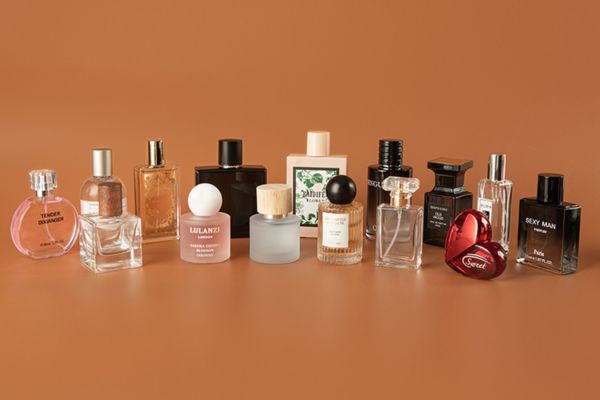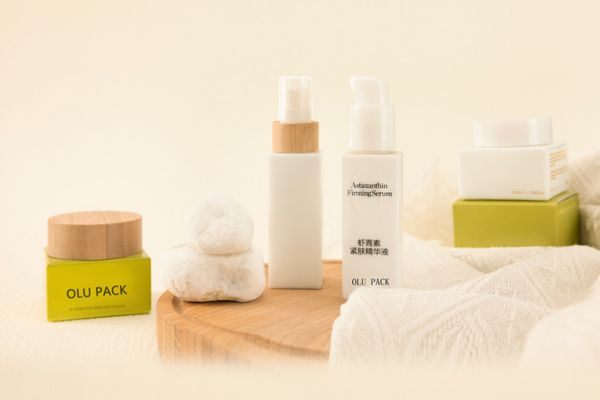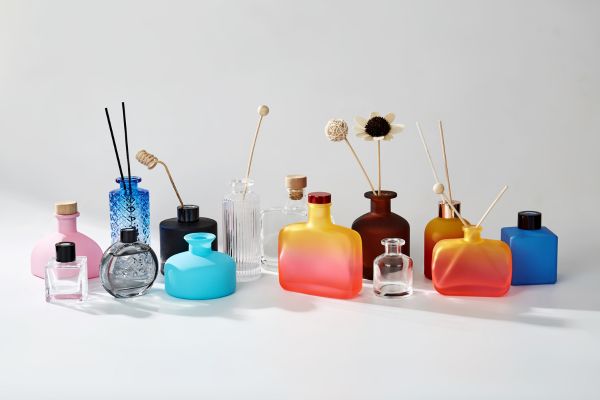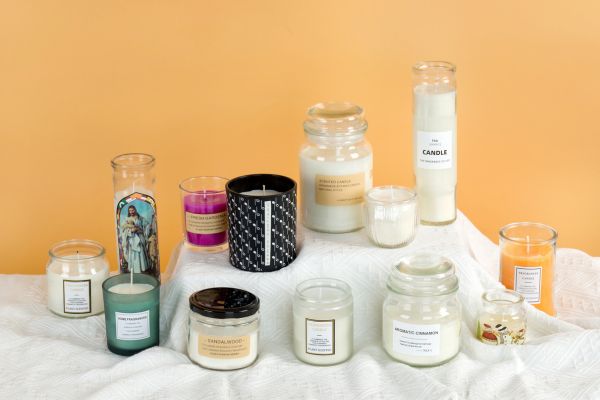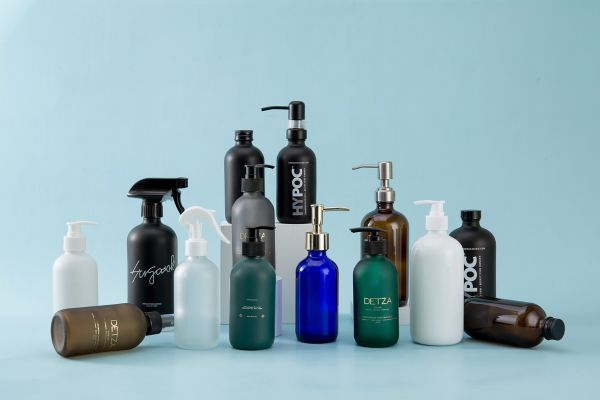Today's consumers are becoming increasingly discerning, looking for products that are eco-friendly and of high quality. The cosmetic glass bottle packaging industry is one of the key sectors significantly affected by this. Major brands are reimagining the way they package their beauty and cosmetic products, with a special emphasis on sustainability. In the current marketplace, sustainability is more than just a buzzword; it's a fundamental aspect of shaping consumer choice and brand positioning.
Sustainable packaging has received a great deal of attention due to the remarkable growth of the concept of the circular economy. Public concern about packaging waste, especially disposable packaging waste, has prompted Governments on all continents to respond. They are implementing legislation to reduce environmental waste and strengthen waste management procedures.
Examples of sustainable practices adopted by leading glass bottle manufacturers
Ardagh Group
The Ardagh Group operates globally with a broad portfolio of glass packaging products. In addition to its expertise in glass packaging, Ardagh Group prioritizes sustainability and environmental responsibility. They take a variety of measures to reduce the environmental impact of their operations and products, including lightweight, recycling, and energy-efficient manufacturing processes.
Verallia
Verallia is a globally recognized manufacturer of glass packaging, providing innovative and sustainable packaging solutions for a variety of industries, including the food and liquor industries. To reduce environmental pollution, Verallia is adjusting its manufacturing process and using renewable and sustainable energy sources to limit CO2 emissions.
Case of the company using recycled glass and lightweight designs
In developed countries in Europe and the United States, such as the United States, Germany, Japan, etc., lightweight glass products have long been the mainstream of the market, because it is essential to reduce product costs and promote energy saving and emission reduction. The technologies that have been maturely applied, such as hot-end spraying technology and surface enhancement technology, are effective means to reduce the weight of bottles and realize the lightweight design of products.
Verallia, specialists in the design, manufacture, and recycling of glass packaging, together with Champagne Terremont, has completed tests of the world's lightest champagne bottle, which weighs just 800 grams, a world record. The new lightweight bottle will reduce CO2 emissions by around 4% per bottle.
Verotec, as a sustainable leader. In the late 1980s, Mr. Albert Kubbutat, the founder of Verotec, invented at the time a lightweight and particularly load-bearing building panel made of recycled glass and was fortunate enough to find a like-minded partner and supporter in Mr. Fritz Stotmeister. In 1989 Sto invested in the construction of the Verotec production site and built the first production line for panels made of expanded glass particles in Lauingen am Danube. To this day, they continue to invest heavily in the development and innovation of their production technologies to ensure the growth and future of Verotec.
Technological advancements in glass recycling processes
With the increasing awareness of environmental protection and the importance of sustainable development, waste glass recycling has become one of the topics of global concern. To solve the problems in the process of waste glass recycling and continuously improve the efficiency and quality of recycling, the scientific and technological community is constantly exploring new technologies and trends.
1. Application of Artificial Intelligence Technology in Waste Glass Recycling
With the rapid development of artificial intelligence technology, it is being widely used in the waste recycling and waste utilization industry. In the field of waste glass recycling, AI technology can realize automatic classification and processing of waste glass. For example, a U.S. company is developing a system that uses machine learning and computer vision technology to realize waste glass classification and recycling. This system can automatically identify the type and color of waste glass and classify it into recyclable and non-recyclable waste glass, greatly improving the efficiency and quality of recycling.
2. Application of Big Data Technology in Waste Glass Recycling
The application of big data technology can enable intelligent management and optimization of waste glass recycling. By collecting, analyzing, and utilizing the large amount of data generated during the recycling process, it is possible to better understand the source and quality of waste glass, develop more effective recycling and utilization plans, and improve the efficiency and quality of recycling.
3. Reduction of waste glass materials to their original chemical composition
A new technique is to recycle waste glass materials by reducing them to their original chemical composition. This technology is called chemical recycling. A chemical process is utilized to reduce waste glass to its original substance and then remanufacture new glass products. This technology is more environmentally friendly than traditional recycling methods, as it allows for the complete recovery and reuse of waste glass and reduces pollution of the environment. In recent years, places such as Europe and Japan have begun to invest in research and development of chemical recycling technology.
In addition, several new technologies for recycling waste glass are being developed. For example, laser crushing technology is used to break waste glass into smaller particles for better recycling and utilization. Meanwhile, waste glass recycling systems based on artificial intelligence and big data analysis have begun to emerge, which can improve recycling efficiency, reduce costs, and optimize the waste glass recycling process.
Development of biodegradable glass alternatives
As the world becomes more aware of the need for sustainable solutions, biodegradable glass is emerging as a promising alternative to traditional glass.
And scientists have been trying to develop a new type of glass that is biodegradable. 2023, the Chinese Academy of Sciences has developed a new type of glass that is biodegradable and bio-cyclable for reuse.
Biodegradable glass is not only better for the environment but it can also be used in a variety of applications. From packaging to building materials, it has the potential to replace traditional glass products in a variety of industries.
Cost implications and scalability of sustainable solutions
The glass bottle packaging industry consumes a lot of resources and energy, the main raw materials consumed are quartz, feldspar, etc., and the main fuels consumed are coal and oil.
Traditional kilns have high energy consumption, low productivity, and high emissions and environmental pollution, so improving the melting quality of glass products and the service life of the melting kiln is the main way to save energy. Mature technology can be used, such as the use of oxy-fuel technology, and then through the optimization of the structure of the furnace, which in turn improves the melting rate of glass products and reduces the energy consumption of the products. Besides, the efficiency of the kiln can be further improved by rationalizing the layout of the production line, adopting an intelligent control system, and using refractory materials and heat preservation materials with excellent performance. It can be said that the development and promotion of energy-saving technology is still the main initiative to realize energy-saving and consumption reduction of glass packaging products in the future.
Environmental impact compared to alternative packaging materials
The glass packaging industry has a large consumption of resources and energy, accompanied by serious pollution of the environment. As raw material processing and handling of harmful dust, glass melting process emissions of harmful gases, soot, waste residue, etc., the processing of wastewater, waste oil, etc., are serious damage to the natural environment.
And it takes 2 million years for a glass bottle to degrade. Whether it is standard glass or plexiglass, they are not biodegradable, and their long-term presence in the environment will bring ecological hazards and social burdens.
Fort Bragg, California, USA, is home to a beach of flowery glass. In the 1950s, it was used as a waste treatment plant to place discarded glass bottles, then the treatment plant went out of business, and tens of thousands of glass bottles were left there. The glass has been polished smooth by the Pacific Ocean's waters and has become rounded balls. For safety reasons, this area is not navigable by ships or developed offshore, and tourists are not allowed to walk up to it, but only to view it from a distance.
Predictions for the adoption of sustainable practices in the coming years
Although glass recycling can be considered a success story compared to other materials, there is still a long way to go. Every year, 28 billion glass bottles and containers are thrown into landfills.
The sustainability of glass bottles is not a black-and-white issue. While glass has advantages in terms of durability, recyclability, and potential reusability, its production requires significant energy consumption and resource extraction. It is critical for consumers, and businesses, to consider the full life cycle of packaging materials and weigh their environmental impact. We can work toward a more sustainable future by increasing waste glass and recycling rates, lightweight glass bottle packaging, and exploring alternatives!
Potential regulatory changes and their impact on the industry
Regulators formulate relevant policies to strictly control environmental pollution and energy consumption standards in the glass manufacturing process, accelerate mergers and reorganizations within the industry, and promptly eliminate energy-consuming operation methods and develop substitutes to ensure the healthy and steady development of the glass manufacturing industry.
OLU Glass Package Categories
As a leader in the glass packaging industry, OLU Glass Bottle Packaging recognizes the importance of sustainable and environmentally friendly packaging. We are committed to adopting environmentally friendly packaging strategies to ensure legal compliance and contribute to a healthier and more sustainable future. We mass produce various environmentally-friendly skincare glass bottle packaging. For example, perfume glass bottles, essential oil glass bottles, lotion glass bottles, cream glass containers, etc. Click on the images below to explore our products.
In Conclusion
Improvement and strict control of the production process, the extensive use of surface strengthening treatment technology, the implementation of lightweight design, and vigorously strengthening the development of new formulations, new processes, and new equipment, advocate the concept of lightweight consumption of glass packaging, to achieve lightweight to adapt to the requirements of the glass packaging sustainable and environmentally friendly, and at the same time, by the excellent chemical stability of the glass packaging, airtightness, cleanliness and transparency, high temperature, easy to disinfect a series of physical and chemical Performance. Glass packaging will have a broad development prospects.
Email: max@antpackaging.com
Tel: +86-173 1287 7003
24-Hours Online Service For You
Post time: 6月-24-2024

